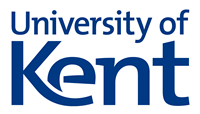Respiratory muscle training (RMT) increases inspiratory muscle strength which then reduces the perception of breathlessness and enhances exercise performance in active individuals. RMT is used in health settings to improve a patients perception of breathlessness.
POWERBreathe has a variety of RMT devices that provide a respiratory load that the user has to overcome to breathe. The greater the respiratory load, the harder the respiratory muscles have to work. The POWERBreathe devices are able to record metrics such as volume, inspiratory flow, power, and work done over the course of a RMT session.
Despite this being valuable feedback to the user, little is known how these variables and the overall training effectiveness is impacted by the breathing patterns adopted by the user during the training.
The School of Sport and Exercise Sciences (SSES) at the University of Kent uses the gold standard 3D motion capture method for assessing breathing patterns, called opto-electronic plethysmography (OEP). In our laboratories, we have shown that OEP can differentiate between an optimal healthy breath and a breathing pattern disorder.
Combining the SSES understanding of breathing patterns using the OEP and synchronising to the variables recorded during the RMT session conducted on the POWERBreathe devices, we will be able to understand how breathing patterns can influence variables such as inspiratory flow and power.
Purpose
Over the course of this 3-year PhD studentship the interaction between movements of the chest and abdomen, and, airflow and respiratory muscle power will be explored. The PhD will explore how feedback from the POWERBreathe device can be enhanced to provide the user a better indication of their breathing pattern during RMT.
Aims of Project
1. Present objective data outlining how breathing pattern influences inspiratory flow, power, and volume.
2. Investigate how real-time feedback during respiratory muscle training can improve breathing patterns and performance.
Requirements
The successful PhD candidate will require the necessary academic credentials and skills to be able deliver work to a PhD level. Whilst there will be strong leadership from the supervisory team, student independent work and using own initiative is a required skill. The successful scholarship candidate will have a keen interest in human movement biomechanics and/or exercise respiratory physiology. Experience in the measurement of 3D motion capture (e.g. Qualisys), working with industry partners and programming languages (e.g. MATLAB) would be an advantage. Applicants are required to have a good Honours degree (at least 2.1 or equivalent) in an appropriate subject, such as: Sport Science, Biomedicine, Health Science, Biomedical Engineering). A Masters in a relevant subject is desirable.
Deadline
Monday 17 April 2023 (23:59 GMT)

 Continue with Facebook
Continue with Facebook




